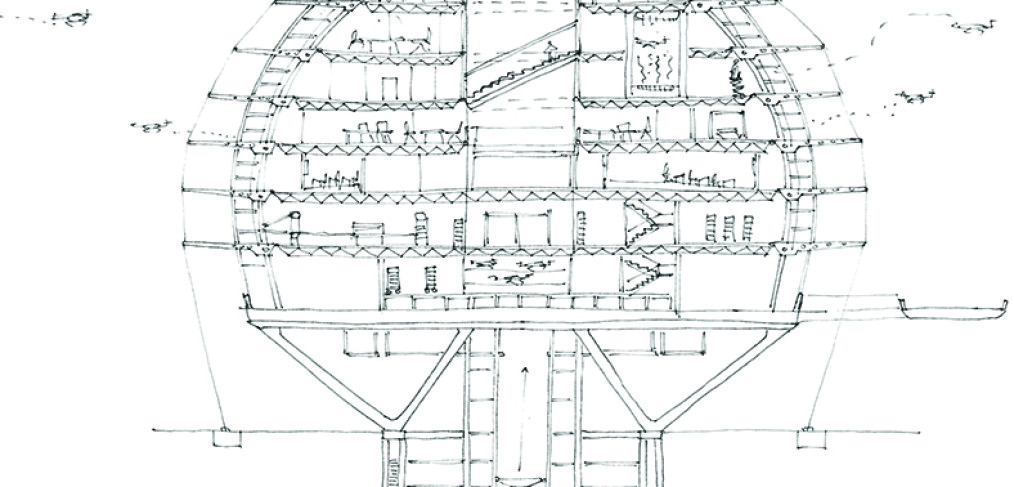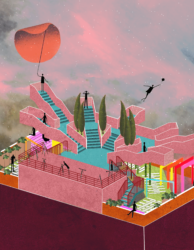
Urban Droneport
Year: 2016
Function: Logistics + Infrastructure
Site location: South Node of M-30 road in Madrid
Institution: University of Alcalá
Brief description of the project: This work aims to design a building and a new infrastructure network that allows the transport of goods with Remotely Piloted Aircraft Systems in urban areas.
It was decided to locate the project in Madrid, within the South Node of the M-30 road, characterized by being a disused urban vacuum that has many potential users of the new delivery network in its range of action.
Being located in a node gives the project a direct communication with the highway for a fast connection with the transit centers of the different delivery companies and at the same time, it gives the possibility to replicate the project in other highway nodes, allowing to cover all the city center.
Due to the location of the building in an aggressive, noisy and heavily contaminated environment, it is decided to isolate the Urban Droneport from the surroundings and focus it into the inner relationship, enhanced by a central courtyard, which enables the entrance of light and the visual relationship between the different floors.
The location and design of the structure also goes in the same line and allows free space inside. Likewise, the hangars contribute to the isolation from the environment by constituting the outer layer of the building.
The Urban Droneport program consists of a Logistics Center and a State Institute of Technology Development associated with RPAS. The project is based on a process architecture, which optimizes the system’s operation and contributes to boost all aspects for the development of the new infrastructure.
After analyzing all the processes that will take place in the project, a spherical formalization is chosen, which makes possible a circular development in both plant and section. This favors, firstly, the distribution and management of packages and secondly, the flight of the aircraft, avoiding the appearance of turbulences.
Focusing on the constructive and structural aspects of the building, the following principles govern: prefabrication, modularity and rationality. It seeks to minimize the elements and types of joints. We opt for a metal structure with dry joints that allows both the assembly/disassembly and its expansion or modification.
The configuration of the drones’ hangars is based on industrial storage systems and are independent of the main structure, which allows the modification of the dimensions of these according to the needs. In the hangars doors, a system of concentration and expansion of the solar rays is designed. This system allows the obtaining of photovoltaic energy, thus covering much of the energy demand of the building.
To enable the operation of this new system, a new infrastructure network is designed, which, together with the Logistics Center, is adapted to the existing city. The network is based on three actions.
The first one is the use of the city as a three-dimensional map that allows us to generate this new network physically disconnected from the existing ones.
The second one is the installation of specific elements in the buildings that integrate the existing city with the new network.
The third action is the design of new post boxes for the delivery and the pick-up of packages. The postbox respond to two casuistries: in buildings accessible by facade, individual postboxes are installed, but in those not accessible by facade, community post boxes are installed. These last ones can be located on the roof of the building or in a nearby public space.
Nationality: Spanish
Contacts: Perfil públicohttps://es.linkedin.com/in/saúl-ajuria-fernandez-aa2b68100
City and date of birth: Burgos. 1 de Marzo de 1992
Tutors: Fernando Quesada
Image credits: Saúl Ajuria Fernández
Credits: “All drone visuals credited to Matternet, Inc. (http://mttr.net).”
Author: Saúl Ajuria Fernández



















